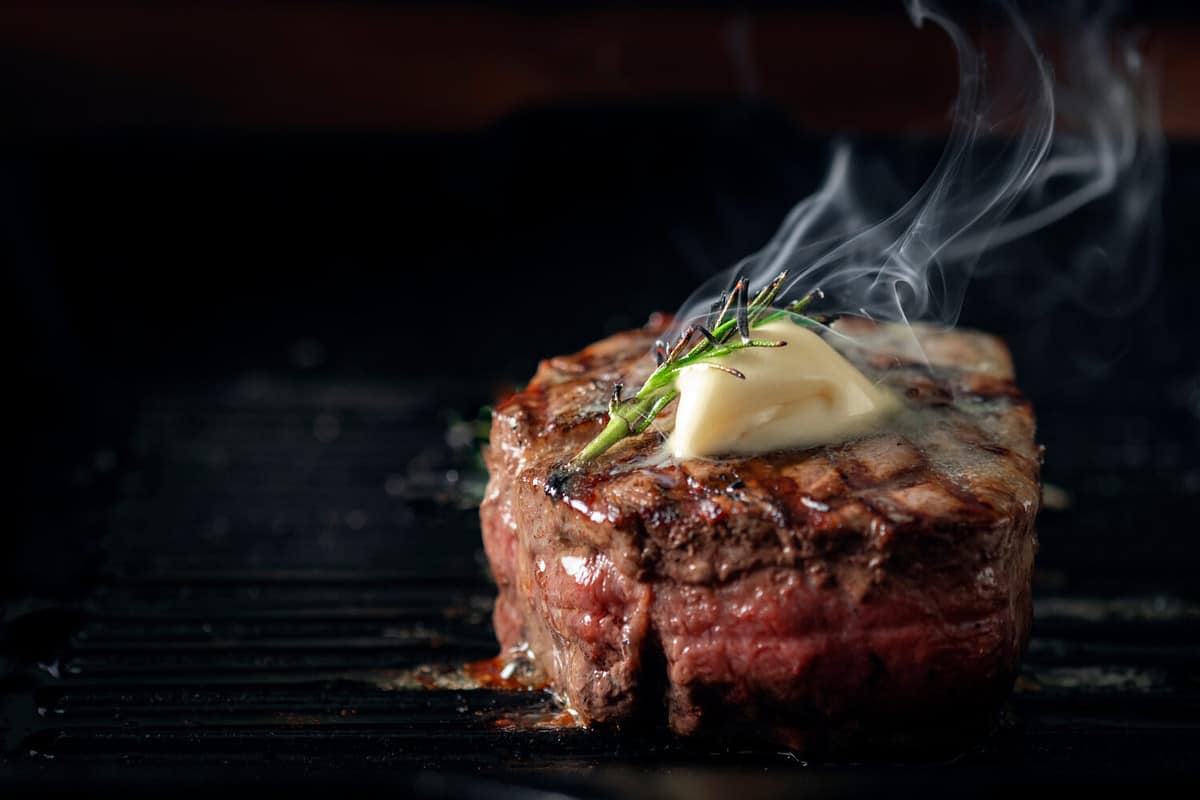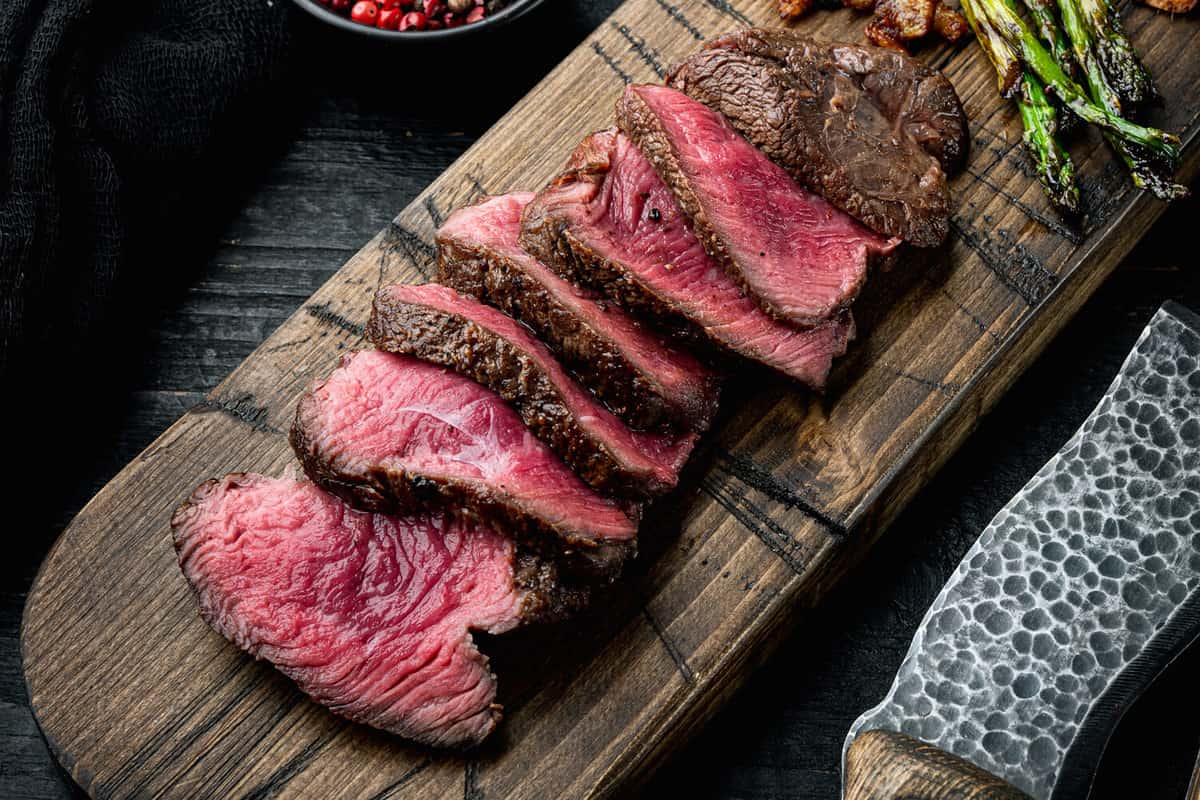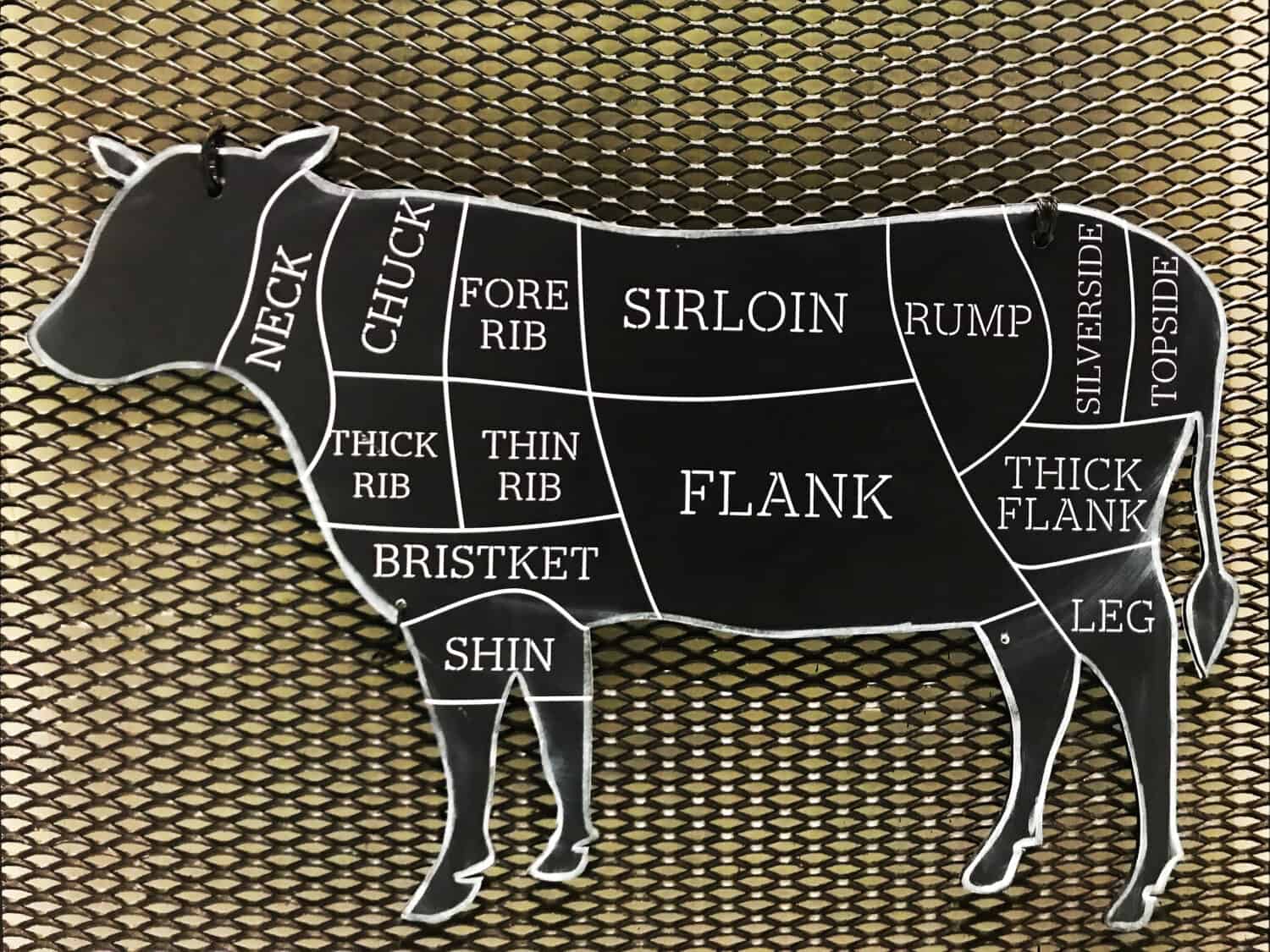You're not alone if you feel a little confused when it’s time to buy a steak. The many cuts and price ranges make it hard to know which type to purchase and why. Most people know that filet mignon is one of the better steaks, but what makes it special? Where on the cow does a filet mignon come from?
The filet mignon is cut from the cow’s tenderloin muscle. Because this area gets little exercise, the meat is exceptionally tender. It’s also relatively lean compared to other steaks. Keep reading to learn what other factors make the tenderloin special and determine if filet mignon is worth its high price tag.
Where is the tenderloin on a cow?
The tenderloin is a long, thin muscle that runs along the cow’s spine. There are two tenderloins on each cow, as it runs equally down both sides of the spine. It is usually butchered as one long, thin section of beef.
Filet mignon – French for “delicate, fine, or cute fillet” – is sliced off the smaller end of the tenderloin. Ironically, if you order filet mignon in France, you will be served pork medallions. The cut that goes by that name in the United States is called “filet de bœuf” in French. In other European countries, it’s called fillet steak (UK and Ireland), filetsteak (Germany), solomillo (Spain), and filetbiff (Norway).

©Andrei Iakhniuk/Shutterstock.com
Why Filet Mignon is so Expensive
Because the tenderloin is such a small muscle, only a little of it is available on each cow. So, it’s far less common than other types of steak. As we all learned in high school economics class, high demand and low supply equals higher prices.
Additionally, filet mignon is higher quality beef that stays tender even when fully cooked. It retains this soft texture despite lacking the fat marbling found in most other steaks.
How to Prepare Filet Mignon
There are many ways to prepare filet mignon, but most people prefer to grill it or cook it in the oven. To grill filet mignon, season it with salt and pepper or a seasoning rub. Set the grill to 500°F and sear the steak, flipping every few minutes, until it reaches your desired level of doneness.
If you prefer to roast filet mignon in the oven, set the oven to 415°F. While the oven preheats, season the steaks with salt and pepper or a seasoning rub. Heat 2 or 3 tablespoons of butter or olive oil in a heavy, oven-safe skillet over medium-high heat. Sear the steaks for two minutes on each side, then place the skillet in the preheated oven. Roast the meat for 5 to 10 minutes or until it reaches the desired doneness.
According to Omaha Steaks, use the following meat thermometer temperatures as a guide to doneness:
- Rare: 120°- 130°F
- Medium Rare: 130°-140°F
- Medium: 140°-150°F
- Well Done: 160°-170°F
Always allow cooked filet mignon to rest for 10 to 20 minutes before cutting it. This allows the meat’s natural juices to redistribute throughout the steak instead of just spilling out onto the serving plate.

©Chatham172/Shutterstock.com
Is filet mignon worth it?
Filet mignon is worth the cost for anyone who enjoys fork-tender beef with a low fat content. However, some people feel that filet mignon’s low fat content results in a bland steak. It is true that fat marbling produces the intense and complex beef flavor that steak lovers enjoy. Therefore, whether filet mignon is worth its cost is a matter of personal taste preference.
How to Save Money on Filet Mignon
Although it will cost a lot initially, you can save money on filet mignon if you buy the whole beef tenderloin and cut the steaks yourself. Check grocer sales ads: whole tenderloins and filet mignon occasionally go on sale.
Most people are unaware that porterhouse steaks and T-bone steaks are larger cuts that include the filet mignon. So if you have one person who prefers fattier steak and one who prefers lean filet mignon, buy a porterhouse or T-bone and share it. The filet will be in a small, rounded shape on one side of the bone, and you'll pay several dollars less per pound.
Up Next
Chateaubriand vs. Filet Mignon: What’s the Difference?
Prime Rib vs. Filet Mignon: 3 Key Differences & Which is Healthier
Filet Mignon vs. New York Strip: 4 Key Differences & Full Flavor Comparison
The image featured at the top of this post is ©pon piriya/Shutterstock.com.
